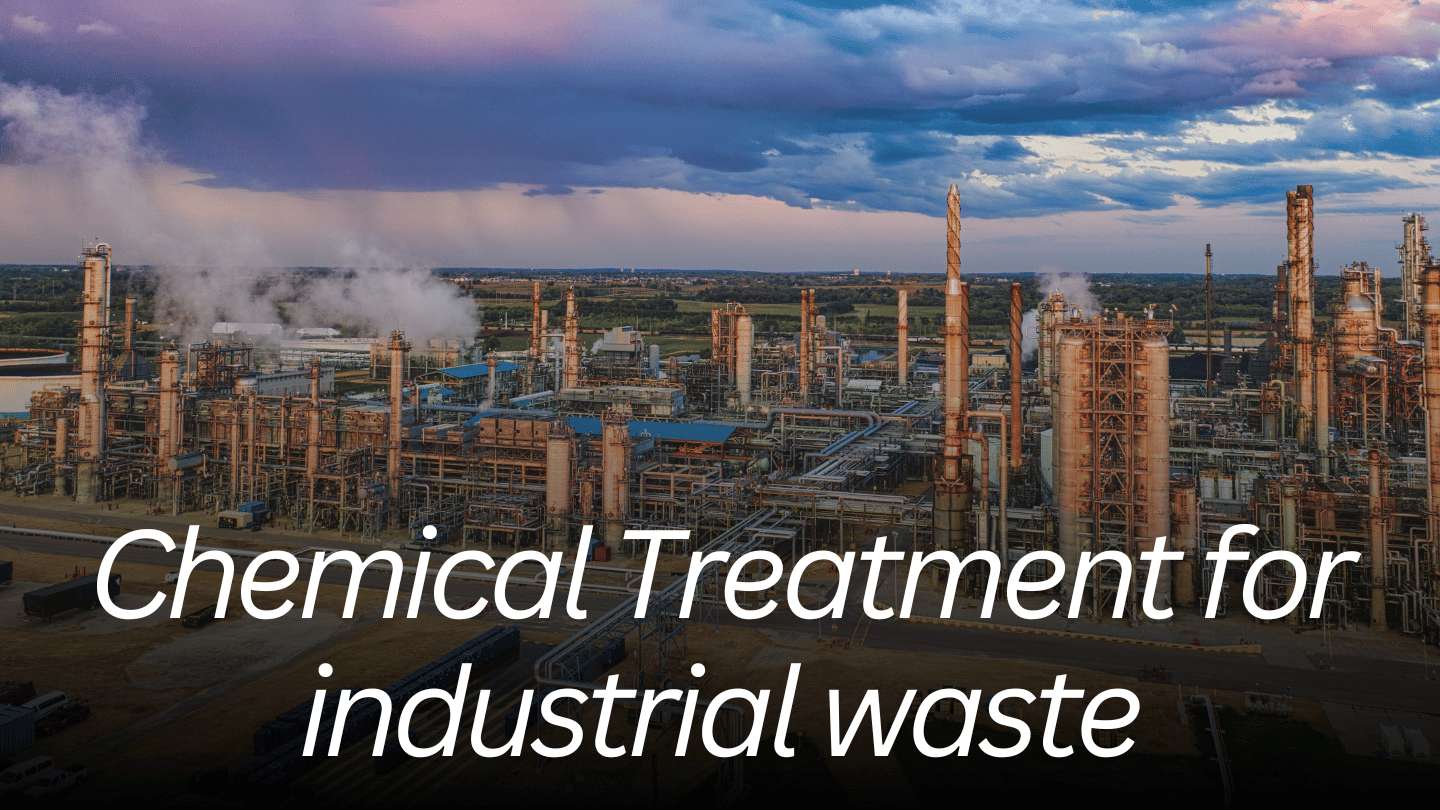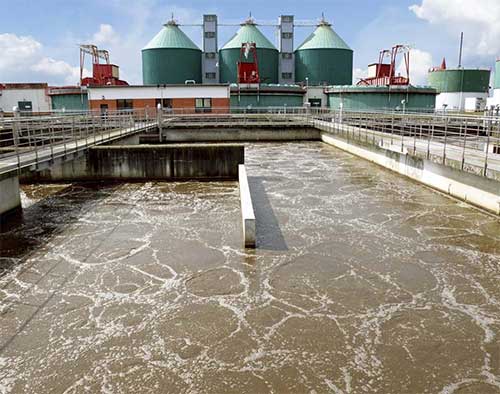Industrial Waste Water Treatment-- Eco-Friendly Solutions for Water Recycling
Industrial Waste Water Treatment-- Eco-Friendly Solutions for Water Recycling
Blog Article
Developments and Advances in Hazardous Waste Water Treatment Technologies
The landscape of commercial wastewater treatment is undertaking a transformative change, driven by advancements that boost both effectiveness and sustainability. As governing requirements advance, the combination of AI and equipment discovering right into wastewater management systems assures to make sure and improve operations conformity.
Review of Drainage Treatment Technologies
Wastewater therapy technologies encompass an array of approaches developed to get rid of contaminants from industrial effluents before their release into the atmosphere. These technologies are vital for keeping ecological balance and guaranteeing compliance with ecological policies. The primary classifications of wastewater treatment include physical, chemical, and organic techniques, each offering distinctive functions based upon the nature of the contaminants present.

Biological treatment approaches utilize bacteria to deteriorate natural matter, making them particularly reliable for organic-rich effluents. Strategies like turned on sludge and biofilm activators harness the natural destruction abilities of germs, bring about significant reductions in biochemical oxygen demand (FIGURE)
Advanced Filtering Strategies
Advanced filtering methods represent a vital advancement in the world of industrial wastewater therapy, boosting the effectiveness of contaminant removal procedures. Industrial Waste Water Treatment. These techniques incorporate a variety of modern technologies, consisting of microfiltration, ultrafiltration, nanofiltration, and reverse osmosis, which provide sequential barriers for different bit sizes and chemical frameworks
Microfiltration and ultrafiltration use membrane layer systems to eliminate put on hold solids, microorganisms, and bigger organic molecules, enhancing the top quality of effluent before further treatment. Nanofiltration connects the void between ultrafiltration and turn around osmosis, efficiently eliminating organic compounds and divalent ions, hence lowering the load on downstream procedures.
Reverse osmosis offers the highest possible level of filtration by allowing only water and little molecules to travel through its semi-permeable membrane layers, making it optimal for reclaiming premium water from commercial effluents. Recent improvements in membrane innovation, consisting of the growth of more fouling-resistant and durable products, have actually considerably boosted functional performance and reduced expenses.
Including these advanced filtration strategies not just improves the total treatment procedure yet additionally contributes to sustainability initiatives by allowing water reuse and source healing in industrial settings. (Industrial Waste Water Treatment)
Organic Therapy Developments

Furthermore, the growth of crafted organic systems, such as membrane bioreactors (MBRs), combines organic treatment with sophisticated membrane layer purification. This combination permits higher effluent top quality and lowered footprint, making it suitable for space-constrained commercial centers. Innovations in genetically engineered microorganisms have actually additionally arised, enhancing the biodegradation of details impurities, such as pharmaceuticals and hefty steels, that are typically testing to remove.
In addition, the execution of bioaugmentation strategies, where helpful microorganisms are introduced to enhance the existing organic treatment processes, has actually revealed appealing lead to enhancing therapy efficiency. These innovations jointly represent a fad in the direction of more effective and lasting biological treatment approaches that can adjust to the evolving intricacies of industrial wastewater streams. As sectors continue to focus on ecological conformity, these biological developments will play a critical duty in wastewater management.

Resource Healing Methods
In commercial setups, the combination of source healing techniques has actually ended up being significantly important for improving sustainability and reducing waste. These approaches focus on drawing out important products and energy from wastewater streams, thus transforming possible toxins into recyclable resources.
One popular approach is nutrition recovery, where nitrogen and phosphorus, usually existing in excess in wastewater, are recorded and exchanged fertilizers. This not just reduces environmental effects yet likewise supplies a round economy solution for agricultural applications. Additionally, technologies such as anaerobic food digestion enable the conversion of organic waste into biogas, a sustainable energy resource that can counter nonrenewable fuel source use in industrial operations.
Additionally, progressed filtration and membrane modern technologies promote the healing of industrial byproducts such as metals and salts. These recouped materials can be reintegrated into manufacturing procedures, decreasing the need for virgin sources.
Future Patterns in Drainage Administration
As sectors significantly focus on sustainability, the future of wastewater administration is established to undergo substantial improvements. Technical advancements, such as expert system and equipment knowing, will enable extra effective surveillance and administration of wastewater systems. These innovations can predict maintenance needs, enhance therapy procedures, and enhance decision-making, ultimately reducing functional expenses and environmental impact.
Additionally, the assimilation of round economic situation concepts will play a crucial function in wastewater administration. Industries are expected to change in the direction of systems that not only treat wastewater however additionally recover useful sources, such as nutrients, water, and power. This shift will certainly lessen waste and promote the reuse of materials, lining up with global sustainability goals.
Emerging therapy strategies, such as membrane layer bioreactors and progressed oxidation processes, will certainly additionally improve the effectiveness of wastewater therapy, permitting greater high quality effluents suitable for reuse. Furthermore, governing structures are likely to advance, emphasizing stricter requirements for wastewater discharge and encouraging markets to embrace cutting-edge treatment remedies.
Conclusion
Finally, the advancement of industrial wastewater therapy technologies demonstrates a substantial change in the direction of boosted effectiveness and sustainability. Technologies in advanced filtering strategies, organic treatments, and source healing methods highlight the market's dedication to environmental stewardship. The combination of fabricated knowledge and maker understanding discover this info here even more optimizes these processes, guaranteeing regulatory compliance and promoting a round economy. Proceeded developments in these areas will certainly play a crucial role in shaping the future of wastewater monitoring and safeguarding vital water sources.
The landscape of commercial wastewater therapy is undertaking a transformative change, driven by advancements that enhance both effectiveness and sustainability.Wastewater treatment innovations include an array of approaches developed to get rid of contaminants from industrial effluents before their release right into the environment.Taking advantage of the power of biological procedures has led to substantial developments in the treatment of industrial wastewater.Additionally, the application of bioaugmentation strategies, where advantageous microbes are introduced to enhance the existing biological therapy procedures, has revealed encouraging outcomes in improving therapy efficiency. These innovations collectively represent a fad in the direction of more lasting and reliable organic therapy techniques article source that can adapt to the evolving intricacies of commercial wastewater streams.
Report this page